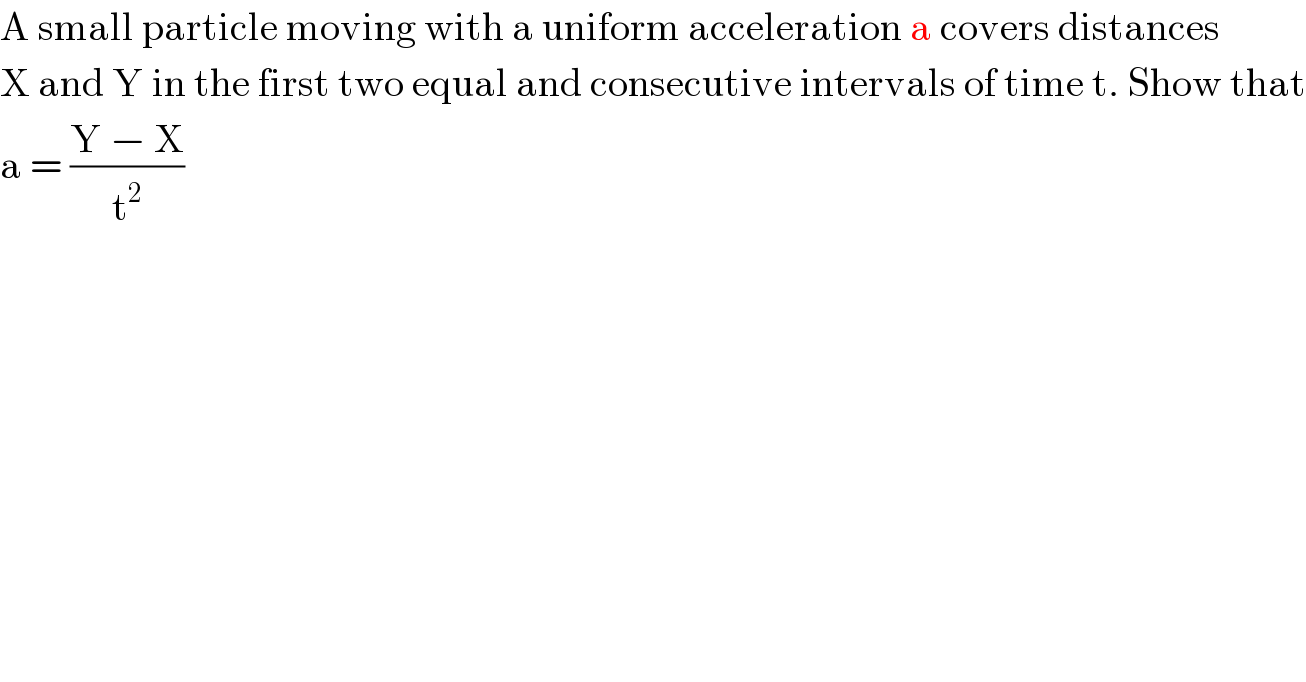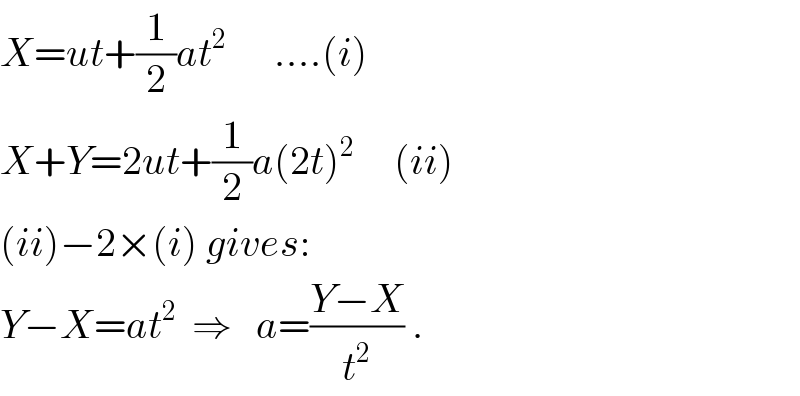
Question Number 26329 by tawa tawa last updated on 24/Dec/17

$$\mathrm{A}\:\mathrm{small}\:\mathrm{particle}\:\mathrm{moving}\:\mathrm{with}\:\mathrm{a}\:\mathrm{uniform}\:\mathrm{acceleration}\:\mathrm{a}\:\mathrm{covers}\:\mathrm{distances}\: \\ $$$$\mathrm{X}\:\mathrm{and}\:\mathrm{Y}\:\mathrm{in}\:\mathrm{the}\:\mathrm{first}\:\mathrm{two}\:\mathrm{equal}\:\mathrm{and}\:\mathrm{consecutive}\:\mathrm{intervals}\:\mathrm{of}\:\mathrm{time}\:\mathrm{t}.\:\mathrm{Show}\:\mathrm{that} \\ $$$$\mathrm{a}\:=\:\frac{\mathrm{Y}\:−\:\mathrm{X}}{\mathrm{t}^{\mathrm{2}} } \\ $$
Answered by ajfour last updated on 24/Dec/17

$${X}={ut}+\frac{\mathrm{1}}{\mathrm{2}}{at}^{\mathrm{2}} \:\:\:\:\:\:....\left({i}\right) \\ $$$${X}+{Y}=\mathrm{2}{ut}+\frac{\mathrm{1}}{\mathrm{2}}{a}\left(\mathrm{2}{t}\right)^{\mathrm{2}} \:\:\:\:\:\left({ii}\right) \\ $$$$\left({ii}\right)−\mathrm{2}×\left({i}\right)\:{gives}: \\ $$$${Y}−{X}={at}^{\mathrm{2}} \:\:\Rightarrow\:\:\:{a}=\frac{{Y}−{X}}{{t}^{\mathrm{2}} }\:. \\ $$
Commented by tawa tawa last updated on 24/Dec/17

$$\mathrm{God}\:\mathrm{bless}\:\mathrm{you}\:\mathrm{sir}. \\ $$
